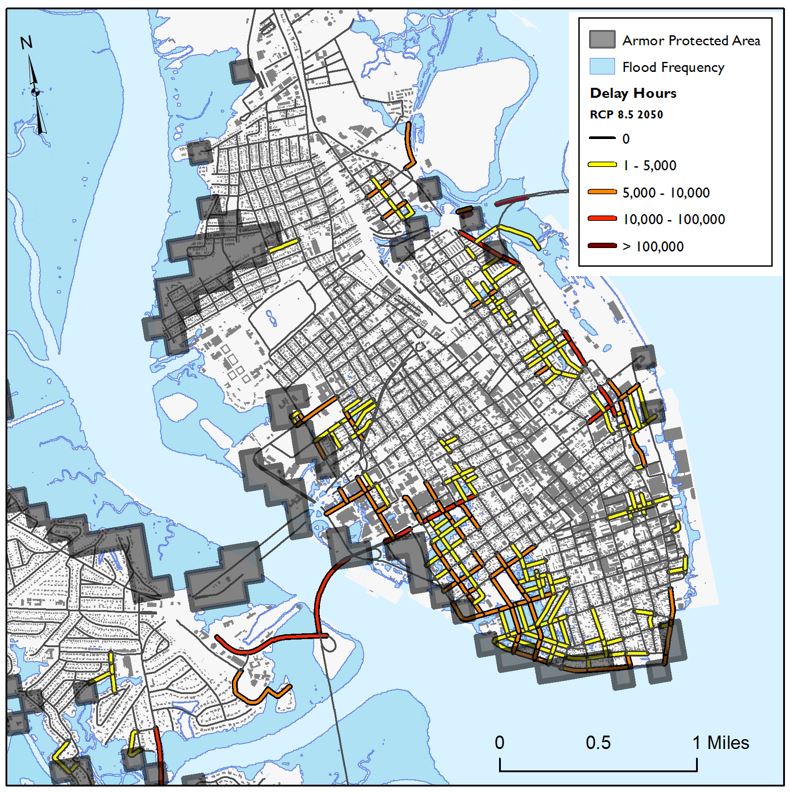Mere nuisance or growing threat? The physical and economic impact of high tide flooding on US road networks
Charles Fant (a)*, Jennifer M. Jacobs (b), Paul Chinowsky (c), William Sweet (d), Natalie Weiss (e), Jo E. Sias (f), Jeremy Martinich (g), and James E. Neumann (h)
a. Senior Technical Consultant, Industrial Economics, Inc., 2067 Massachusetts Ave, Cambridge, MA 02140, cfant@indecon.com
b. Professor, Department of Civil and Environmental Engineering, University of New Hampshire, 453 Morse Hall, Durham, NH 03824, Jennifer.Jacobs@unh.edu
c. President, Resilient Analytics, Inc. and Professor, University of Colorado, 314 UCB, Boulder, CO 80309, pchinowsky@resilient-analytics.com
d. National Oceanic and Atmospheric Administration, National Ocean Service, Center for Operational Oceanographic Products and Services, Silver Spring, MD, USA, william.sweet@noaa.gov
e. Senior Research Analyst, Industrial Economics, Inc., 2067 Massachusetts Ave, Cambridge, MA 02140, weiss.natalie17@gmail.com
b. Professor, Department of Civil and Environmental Engineering, University of New Hampshire, 33 Academic Way, Kingsbury Hall, W183, Durham, NH 03824, Jo.Sias@unh.edu
g. Climate Scientist, U.S. Environmental Protection Agency, 1200 Pennsylvania Ave, NW MC6207A, Washington, D.C. 20460, USA, Martinich.Jeremy@epa.gov
h. Principal, Industrial Economics, Inc., 2067 Massachusetts Ave, Cambridge, MA 02140, JNeumann@indecon.com
* Corresponding author
Abstract
High Tide Flooding (HTF) already affects traffic in coastal areas across the United States but the issue will worsen significantly. This study advances the understanding of the risks and impacts of HTF on traffic by presenting national-scale risks in the form of traffic delays and indirect costs. By 2020, annual national-level costs are $1.3 and $1.5 billion but costs increase to $28 and $37 billion in 2050 and $220 and $260 billion in 2100 for RCP 4.5 and RCP 8.5, respectively. Total costs over the century are $1.0 trillion for RCP 4.5 and $1.3 trillion for RCP 8.5 (discounted 3%). By simulating a least-cost decision, additional protection of these roads by building sea walls or raising the road surface could significantly reduce these costs, bringing total discounted costs to $61 and $78 billion for RCP 4.5 and 8.5, respectively, but there remain many barriers in coastal areas to adopting least-cost adaptation decisions, meaning these gains may not be realized without both careful planning and information sharing.
